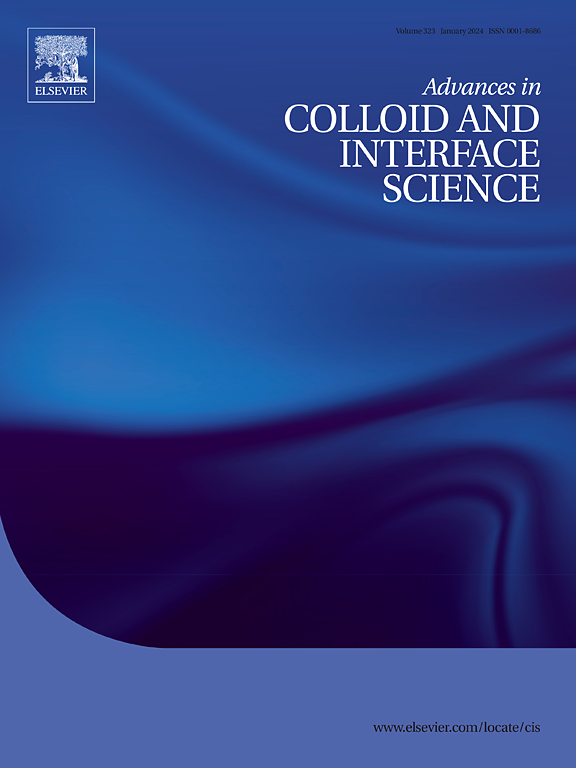Biopolymers to composite adsorbents for sulfate removal: From conventional to sustainable systems
IF 15.9
1区 化学
Q1 CHEMISTRY, PHYSICAL
引用次数: 0
Abstract
Addressing elevated water salinity is a global water security issue listed among the UN's Sustainable Development Goals (UN-SDGs). Sulfate is a contributor to water salinity due to its high solubility and is a pollutant of increasing global concern. While various water treatment technologies are currently available, the high capital infrastructure and operational costs of such advanced methods have sustainability limits for their widespread adoption. By contrast, adsorption science and technology offers facile treatment and a sustainable mitigation strategy for the removal of oxyanions such as sulfate. A key challenge in adsorption science and technology relates to the molecular selective uptake of sulfate. This has catalysed significant effort towards achieving improved adsorption properties and the development of sustainable adsorbent technology. This review provides coverage of recent literature on synthetic adsorbents to current research on biosorbents that contain chitosan due to its multifunctional colloid and interface properties. The shift from conventional synthesis to green synthetic strategies are highlighted by the preparation of advanced biocomposite materials with unique sulfate adsorption properties. Diverse types of materials from inorganic minerals to polymer-based adsorbents (e.g., polycaprolactones, waste-based materials from fly ash, etc.) is described to highlight their sulfate adsorption properties. Specifically, chitosan and agricultural biomass waste in the form of lignocellulose materials are abundant and promising renewable platforms for the preparation of sulfate adsorbents. In particular, the adsorption properties of chitosan biocomposites are highlighted by its efficacy for adsorption-based remediation of sulfate oxyanions that reveal its promising utility as sulfate adsorbents with unique colloidal and interface properties.

生物聚合物到复合吸附剂的硫酸盐去除:从传统到可持续系统
解决水盐度升高问题是联合国可持续发展目标(UN- sdgs)中列出的全球水安全问题。硫酸盐由于其高溶解度而导致水的盐度,是一种日益受到全球关注的污染物。虽然目前有各种水处理技术,但这些先进方法的高资本基础设施和运营成本限制了其广泛采用的可持续性。相比之下,吸附科学和技术为去除硫酸盐等氧离子提供了简便的处理和可持续的缓解策略。硫酸盐的分子选择性吸收是吸附科学和技术面临的一个关键挑战。这促进了对改善吸附性能和发展可持续吸附剂技术的重大努力。本文综述了近年来合成吸附剂的相关文献,以及壳聚糖在生物吸附剂中的研究现状。具有独特硫酸盐吸附性能的先进生物复合材料的制备突出了从传统合成到绿色合成策略的转变。描述了从无机矿物到聚合物基吸附剂(例如聚己内酯,来自粉煤灰的废物基材料等)的各种类型的材料,以突出其硫酸盐吸附性能。具体来说,壳聚糖和农业生物质废弃物以木质纤维素材料的形式是制备硫酸盐吸附剂的丰富和有前途的可再生平台。特别是,壳聚糖生物复合材料在硫酸盐氧离子的吸附修复方面的效果突出,表明其作为硫酸盐吸附剂具有独特的胶体和界面性能。
本文章由计算机程序翻译,如有差异,请以英文原文为准。
求助全文
约1分钟内获得全文
求助全文
来源期刊
CiteScore
28.50
自引率
2.60%
发文量
175
审稿时长
31 days
期刊介绍:
"Advances in Colloid and Interface Science" is an international journal that focuses on experimental and theoretical developments in interfacial and colloidal phenomena. The journal covers a wide range of disciplines including biology, chemistry, physics, and technology.
The journal accepts review articles on any topic within the scope of colloid and interface science. These articles should provide an in-depth analysis of the subject matter, offering a critical review of the current state of the field. The author's informed opinion on the topic should also be included. The manuscript should compare and contrast ideas found in the reviewed literature and address the limitations of these ideas.
Typically, the articles published in this journal are written by recognized experts in the field.

 求助内容:
求助内容: 应助结果提醒方式:
应助结果提醒方式:


